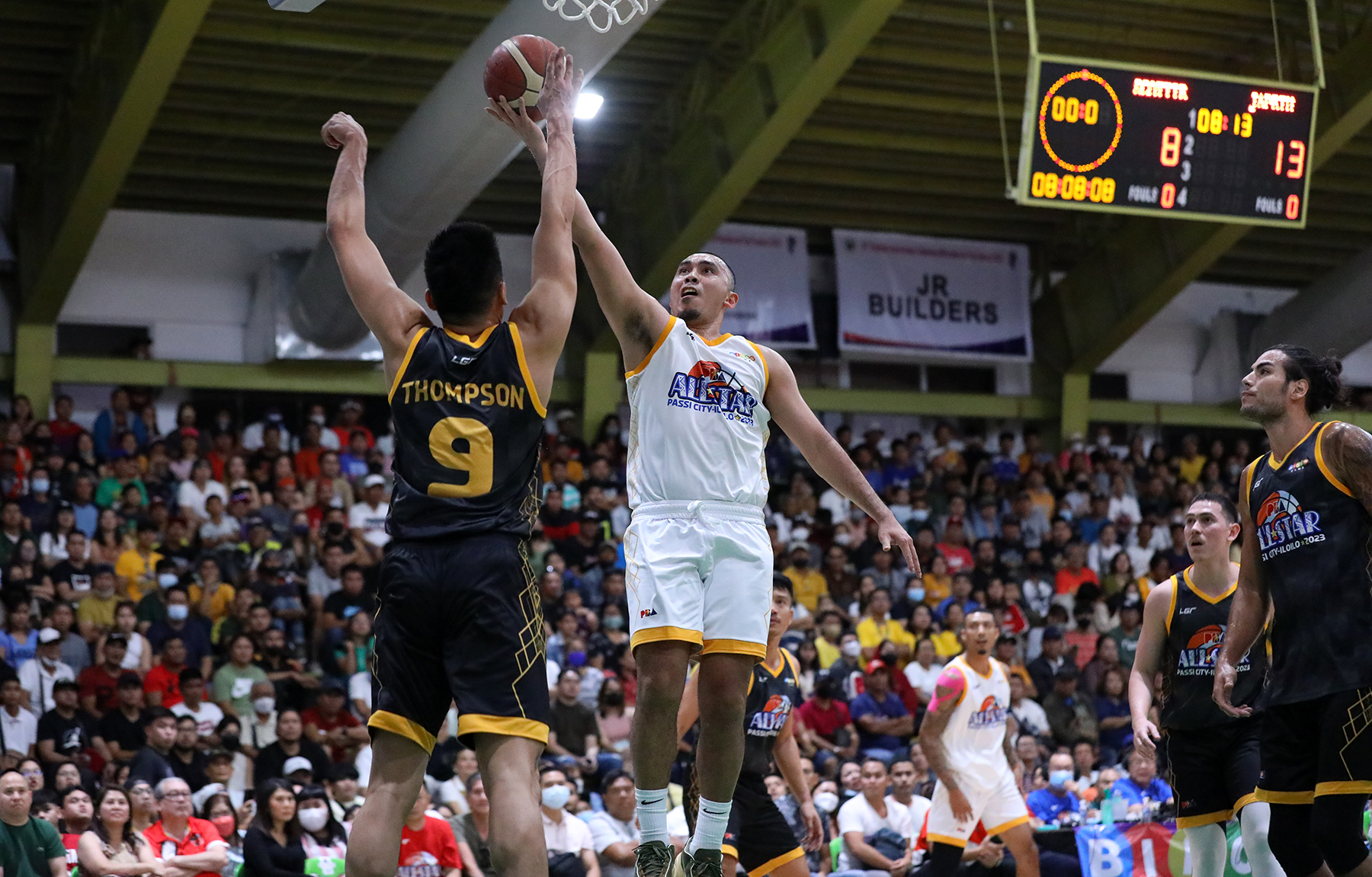
Paul Lee goes for a layup against Scottie Thompson during the PBA All-Star Game in Passi, Iloilo. PBA IMAGES
The Philippine Basketball Association (PBA) turned in an All-Star Game to remember on Sunday night, largely due to a few gimmicks outside the realm of a standard basketball game.
Dunks that were worth three points added a flavor to above-the-rim action while the scratching of player timeouts resulted in a fast-paced action. But a court stripe 27 feet away from the rim’s center proved to be a more potent game-changer.
The stripe was a four-point line, an All-Star idea that, it turns out, was hatched from a young man’s room.
“One afternoon, I was watching my son play NBA 2K. I saw him designing his own court and noticed that it had an additional arc,” PBA deputy commissioner Eric Castro told the Inquirer the morning after the revelries at City of Passi Arena.
“I thought, why not add a four-point shot? I discussed it with league officials [Mauro] Bengua Jr. and Joey [Guanio], and they said why not? It’s the All-Star [Weekend], and we figured we could experiment,” he added.
The experiment, for the purposes of the midseason extravaganza, was quite the success—as a new treat for fans and as an actual game tool.
“The game was more exciting because you still have a chance even if you’re down. The game swings frequently,” Castro said.
Castro felt that with players taking their game farther and farther from the rim, adding the line was a no-brainer.
“Our players’ ranges have developed. We could see it in the likes of Robert Bolick and Paul Lee,” he said.
Three-point king
Lee actually benefited the most from the new line. Crowned as the Three-point king the night before, the Magnolia guard finished with 32 points built on a seven-for-13 shooting clip from four-point territory to help Team Japeth escape Team Scottie by the skin of its teeth, 140-136.
Coach Tim Cone, who called the shots for Team Japeth, also felt that the novelty shot adds more spice to the main event of the All-Star Weekend.
“I was telling the guys at halftime that it was like for me 40 years ago when the three-point shot just started,” he told the Inquirer while accommodating the fans’ requests for a selfie.
“Everybody was going crazy over it. And now, everybody is also going crazy over the four-point shot. It was bringing back memories,” he added.
The four-pointer made leads perilous and incentivized the trailing team that built a strategy around it. It also gave players an added weapon to fish out of their pockets.
“I think they took a page out of the NBA and [realized] how bad that All-Star Game was and they did not want to repeat that,” Cone said.
Trailblazing move
“When it came down to it, guys wanted to compete,” the seasoned mentor added. “It is in their DNA to compete. They made a conscious decision before the game that they were going to come out to play both sides of the ball.”
Castro hopes that down the line, the trial of a four-point line ushers in a new era for Asia’s pioneering pro league.
“Hopefully the board can later consider it,” Castro said of the stripe being used in a season match, even as the feature wasn’t received warmly in terms of being used in a regular game.
“I don’t see it happening at this point,” said Lee, a sentiment initially broached by Rain or Shine coach Yeng Guiao, who handled Team Scottie. “Maybe in the All-Star Game, you can implement it as a special treat for the fans. But I still don’t see it being implemented in a regular game.”
Nevertheless, the All-Star Game allowed the shot to make a point in terms of changing the game. And at the very least, debuting the four-pointer was a trailblazing move in itself.
“At least we’re the first league to actually try it in a game. It’s like when we implemented the four-man referee substitution,” Castro said. INQ

